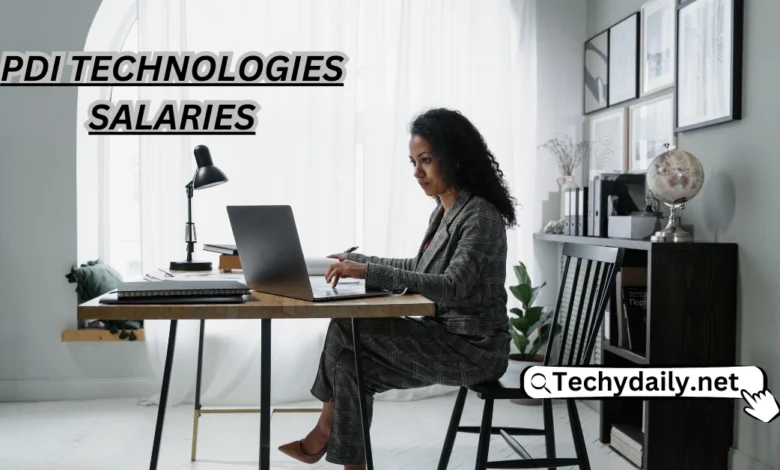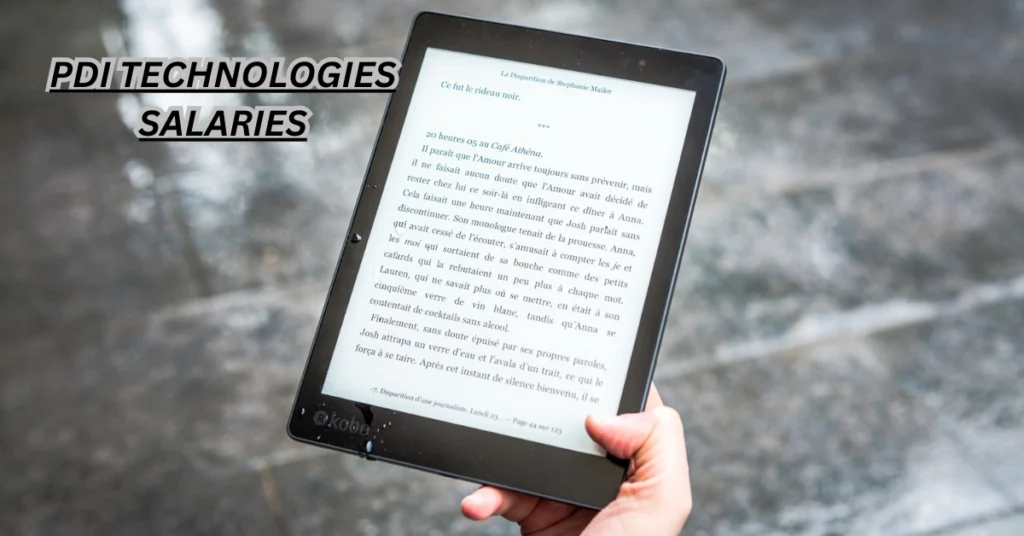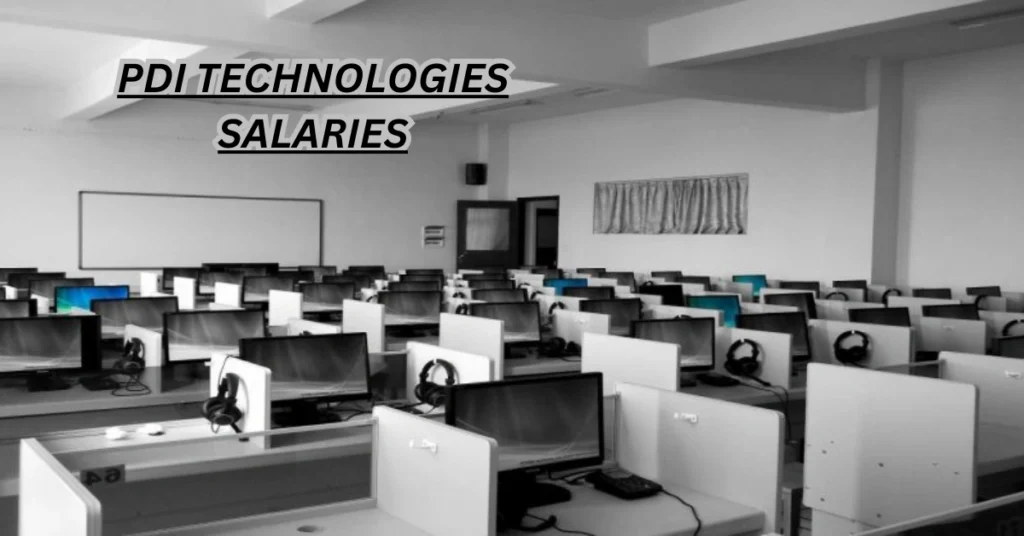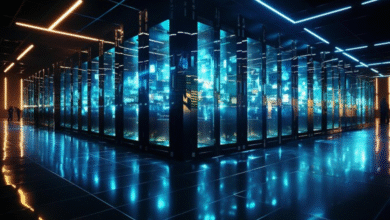PDI Technologies Salaries: A Complete Overview

Introduction to PDI Technologies Salaries
Before diving into salary information, it’s important to understand what PDI Technologies does. The company, founded in 1983, has built a solid reputation as a provider of innovative software solutions to the retail, fuel, and logistics industries. Their suite of products includes software to improve operational efficiency, business management, and customer experience. PDI Technologies Salaries plays a critical role in transforming how businesses interact with their customers and manage their resources.
Working at PDI Technologies offers employees the chance to be part of a forward-thinking company with a focus on innovation and professional growth. The company places high value on collaboration, creativity, and continuous learning, which makes it an exciting environment for professionals seeking to make a meaningful impact through technology.
Understanding PDI Technologies Salary Structure

PDI Technologies offers competitive salaries that align with industry standards, but the actual salary you can expect to earn will depend on various factors including the job role, your experience, and the region in which you are based. Below, we explore salary ranges for key positions at PDI Technologies and offer a closer look at the factors that contribute to salary variations.
Software Engineer Salaries
As one of the most in-demand roles in the tech industry, software engineers at PDI Technologies are responsible for developing the software that powers the company’s products and services. Their work ensures that businesses in the retail, fuel, and logistics industries can operate seamlessly.
- Average Salary Range: $95,000 – $125,000 per year
- Skills Required: Expertise in programming languages such as Java, Python, C++, and knowledge of software development methodologies.
- Growth Potential: Experienced software engineers can see significant salary increases as they move into senior or leadership roles, particularly in areas like cloud computing or machine learning.
Product Manager Salaries
Product managers at PDI Technologies Salaries have the crucial responsibility of overseeing product development, from conception to launch. They work closely with engineering, design, and marketing teams to create products that meet the needs of clients and align with business goals.
- Average Salary Range: $110,000 – $150,000 per year
- Skills Required: Strong analytical skills, project management experience, and the ability to understand both the technical and business aspects of a product.
- Growth Potential: Product managers often transition into senior leadership roles, such as Director or VP of Product, where they can command higher salaries and additional bonuses.
Data Scientist Salaries
With the increasing reliance on data in today’s tech-driven world, data scientists at PDI Technologies Salaries are key to transforming raw data into actionable insights. Their work helps the company and its clients optimize operations and improve decision-making processes.
- Average Salary Range: $105,000 – $145,000 per year
- Skills Required: Proficiency in data analysis tools such as SQL, R, and Python, as well as experience in machine learning and predictive modeling.
- Growth Potential: As a data scientist grows in experience, they can specialize in niche areas such as AI, deep learning, or big data analytics, which can lead to higher salary offers and career advancement.
Sales Engineer Salaries
Sales engineers at PDI Technologies play an essential role in driving business growth by helping potential clients understand the value of the company’s products. They combine technical expertise with sales skills to effectively communicate how PDI’s solutions can solve client problems.
- Average Salary Range: $80,000 – $120,000 per year, with additional performance-based bonuses
- Skills Required: Strong communication and negotiation skills, along with a solid understanding of the technical aspects of the products being sold.
- Growth Potential: Sales engineers who meet or exceed targets often receive significant bonuses, and those who excel can move into higher-paying managerial roles or business development positions.
UX/UI Designer Salaries
User experience (UX) and user interface (UI) designers are responsible for ensuring that PDI Technologies’ products are not only functional but also user-friendly and visually appealing. These designers focus on creating intuitive interfaces that enhance the overall user experience.
- Average Salary Range: $90,000 – $120,000 per year
- Skills Required: Proficiency in design software such as Adobe XD, Figma, and Sketch, as well as an understanding of human-centered design principles.
- Growth Potential: As UX/UI designers gain experience, they can take on leadership roles in design teams or become involved in broader product strategy, which leads to higher compensation and increased responsibilities.
Location-Based Salary Differences

Location plays a significant role in determining the salary for employees at PDI Technologies. Salaries tend to be higher in major tech hubs like Silicon Valley or New York due to the high cost of living in these regions. Conversely, employees based in smaller cities or regions with a lower cost of living may have a slightly lower salary, but the overall compensation package is still competitive.
- Silicon Valley: Salaries in Silicon Valley for roles such as software engineers and product managers can be 20-30% higher than in other regions.
- Other Cities: In cities like Austin, Texas, and Chicago, salaries are competitive but may be on the lower end of the spectrum compared to tech hubs. However, the lower cost of living in these areas can make the compensation more attractive.
Benefits at PDI Technologies
Along with competitive salaries, PDI Technologies offers a comprehensive benefits package that contributes to employee satisfaction and well-being. These benefits are designed to enhance work-life balance, support career growth, and provide financial security.
1. Health Insurance
PDI Technologies provides health insurance plans for employees and their families, including medical, dental, and vision coverage. These benefits ensure that employees can access the healthcare they need without significant out-of-pocket expenses.
2. Retirement Plans
PDI Technologies offers a 401(k) retirement plan with company matching, helping employees save for the future and plan for retirement.
3. Paid Time Off
The company provides generous paid time off (PTO), including vacation days, sick leave, and paid holidays, ensuring employees have the time to recharge.
4. Professional Development
PDI Technologies encourages employees to continue learning and advancing their careers. The company offers access to training, certifications, and conference opportunities, which help employees stay up to date with the latest industry trends.
5. Flexible Work Options
To promote a healthy work-life balance, PDI Technologies offers flexible work arrangements, including remote work and flexible hours for eligible positions.
Tips to Increase Your Earning Potential at PDI Technologies

To maximize your earning potential at PDI Technologies, consider the following strategies:
1. Specialize in High-Demand Skills
Technologies such as artificial intelligence, machine learning, and cloud computing are in high demand. Gaining expertise in these areas can make you more valuable to the company and increase your salary potential.
2. Take on Leadership Roles
As you gain experience, seek opportunities to take on leadership roles within your team. Managing teams or leading complex projects can increase your visibility within the company and open up opportunities for higher-paying positions.
3. Exceed Performance Expectations
At PDI Technologies, performance-based bonuses are common. By consistently exceeding expectations in your role, you increase your chances of receiving bonuses or salary increases based on your performance.
FAQs: PDI Technologies Salaries
1. What is the average salary at PDI Technologies?
The average salary at PDI Technologies varies based on the role, experience, and location. For software engineers, the average salary typically ranges from $95,000 to $125,000 per year. Product managers can expect salaries between $110,000 and $150,000 annually. Salaries for other roles like data scientists, UX/UI designers, and sales engineers fall within competitive ranges, with the potential for bonuses and salary growth.
2. How does PDI Technologies’ salary compare to other tech companies?
PDI Technologies offers competitive salaries in line with industry standards for the tech sector. While the exact salary may differ depending on your role and experience, PDI is known to offer salaries that reflect the value of its employees, especially in key technical positions such as software engineers, product managers, and data scientists.
3. Do PDI Technologies employees receive performance-based bonuses?
Yes, PDI Technologies provides performance-based bonuses, especially for roles like sales engineers and product managers. These bonuses are tied to both individual and team performance and can significantly boost overall compensation.
4. How does location affect salaries at PDI Technologies?
Location plays an important role in determining salaries at PDI Technologies. Employees based in tech hubs like Silicon Valley or New York typically receive higher salaries due to the higher cost of living in these areas. On the other hand, employees in smaller cities or regions with lower living costs may receive slightly lower salaries but still benefit from a competitive compensation package.
5. Are there any additional benefits offered at PDI Technologies besides salary?
Yes, PDI Technologies offers a robust benefits package that includes comprehensive health insurance (medical, dental, and vision), a 401(k) retirement plan with company matching, paid time off (PTO), professional development opportunities, and flexible work arrangements. These benefits complement the salaries and help create a supportive and rewarding work environment.
Conclusion
PDI Technologies offers competitive salaries that reflect the importance of the work employees do in driving innovation and improving business processes across industries. With a strong focus on professional growth, employee benefits, and a collaborative work environment, PDI Technologies is an attractive employer for tech professionals looking to make an impact. Whether you’re just starting out or have years of experience, there are ample opportunities to grow and advance your career at PDI Technologies, both in terms of salary and personal development.
Explore the world of technological innovation with unique and engaging clipart, perfect for your creative projects at Techy Daily.



